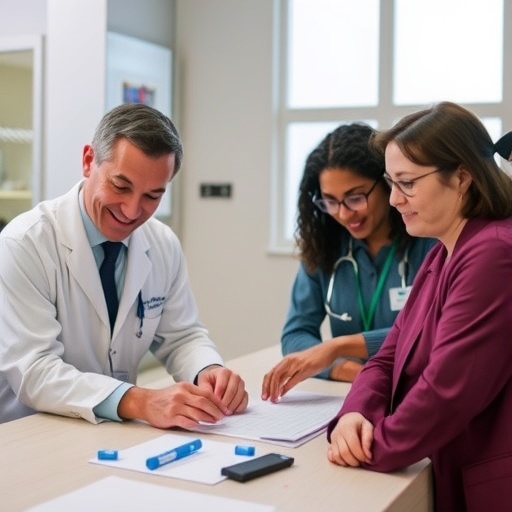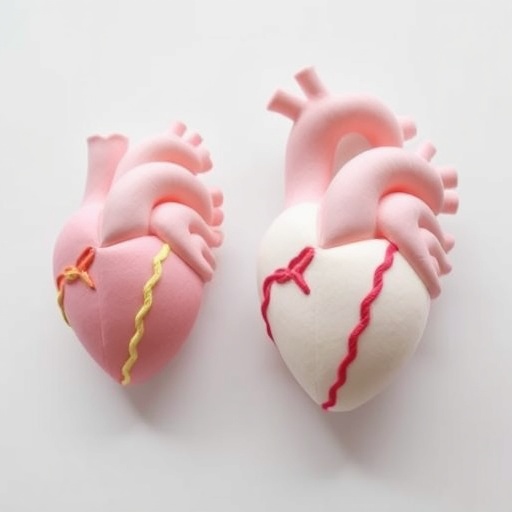The emergence of digital health solutions has transformed the landscape of healthcare. One significant innovation is the Multidisciplinary e-Care Coordination (MDeCC) prototype, specifically designed to enhance the management of pressure injuries, which are often a major concern in patient care. Created by a team of researchers led by Al-Moteri, this groundbreaking tool seeks to improve communication and collaboration among healthcare providers, ultimately aiming to provide a more cohesive and effective approach to treating and preventing pressure injuries.
Pressure injuries, commonly known as bedsores or pressure ulcers, arise from prolonged pressure on the skin and underlying tissues. These injuries can lead to complications such as infections, increased hospital stays, and diminished quality of life for patients. The need for effective care strategies is critical, especially for vulnerable populations, including the elderly and those with mobility issues. Traditional care methods have often been inadequate, prompting researchers to explore innovative technological solutions to drive improvement.
The MDeCC prototype stands out due to its user-centric design, which leverages multidisciplinary expertise to enhance patient outcomes. By integrating various healthcare professionals, including nurses, physicians, and therapists, the tool fosters a more inclusive care environment. The development process involved comprehensive research, guided by the principles of collaboration and patient-centered care, ensuring that all professionals contribute their specialized knowledge to address the complex needs of patients with pressure injuries.
One of the critical aspects of the MDeCC prototype is its advanced digital platform enabling real-time communication among various healthcare providers. This capability holds immense potential to streamline care processes, reduce redundancies, and enhance decision-making. In an environment where timely intervention is crucial, particularly for patients at risk of developing pressure injuries, the ability to share information instantly can make a significant difference.
Moreover, the MDeCC prototype incorporates data analytics tools to monitor patient progress continuously. By analyzing parameters such as skin integrity, wound healing stages, and patient mobility, healthcare providers can identify trends and make informed decisions regarding interventions or necessary adjustments in treatment plans. This data-driven approach epitomizes the future of healthcare, where technology plays a pivotal role in facilitating better patient outcomes.
The design of the MDeCC prototype is also influenced by feedback from end-users, particularly the healthcare professionals who will utilize it in their practice. Engaging these individuals throughout the development process has been key to ensuring that the tool is not only functional but also intuitive and easy to navigate. An e-Care application that is cumbersome or difficult to use can hinder its effectiveness, making user experience a top priority.
The implementation of the MDeCC prototype can potentially revolutionize how pressure injuries are managed in clinical settings. In acute care facilities, for example, where patient turnover is high, healthcare staff must quickly identify and address risks associated with pressure injuries. The MDeCC’s coordination capabilities can ensure that critical information flows seamlessly between departments, leaving no room for oversight that could lead to adverse patient outcomes.
In addition to its practical implications, the MDeCC prototype presents exciting opportunities for research. As data is collected and analyzed, researchers can gain valuable insights into the patterns and predictors of pressure injuries. This knowledge can inform future clinical guidelines and best practices, paving the way for enhanced healthcare protocols that specifically target the prevention and management of these injuries.
Collaboration beyond clinical settings is also a feature of the MDeCC initiative. By incorporating insights from various stakeholders, including patients, caregivers, and health systems, the program aims to foster a holistic understanding of pressure injury management. Patient engagement in research not only aids in understanding practical challenges faced on the ground but also ensures that the solutions developed address real-world needs.
The implementation of such an e-Care tool, however, does not come without challenges. Issues regarding data security, privacy, and interoperability among existing health records are vital considerations that must be addressed to ensure the MDeCC prototype’s success. As healthcare increasingly embraces digital transformation, navigating these hurdles will be crucial to fostering trust and acceptance among users.
Furthermore, an essential component of this initiative involves training healthcare providers on effectively using the MDeCC prototype. An investment in education is vital to ensure that all involved parties are equipped with the knowledge required to leverage the platform optimally. As technology continues to evolve, maintaining a well-trained workforce remains a cornerstone of successful implementation.
In conclusion, as the healthcare industry grapples with the complexities of managing pressure injuries, the MDeCC prototype emerges as a beacon of hope. By fostering collaboration across disciplines, enhancing communication, and utilizing innovative technology, it presents a comprehensive solution that is poised to improve patient outcomes significantly. The future of healthcare is undoubtedly intertwined with such digital innovations, which serve to empower both providers and patients to achieve better health and quality of life.
The journey of the MDeCC prototype signifies the ongoing evolution and integration of technology into every aspect of healthcare practice. Researchers and healthcare professionals alike are optimistic about the potential impact this tool will have on patient care. As we move forward, it will be exciting to observe how the lessons learned from this prototype can shape forthcoming innovations and practices in the healthcare ecosystem.
As the MDeCC continues to be developed and fine-tuned, its potential applications could extend beyond pressure injuries to other areas of patient care, highlighting the versatility of interdisciplinary approaches. With a commitment to continual improvement and adaptation, the pathway is clear for this prototype to make a meaningful difference in the world of healthcare.
Overall, the Multidisciplinary e-Care Coordination prototype represents a significant advancement in the way pressure injuries are addressed within healthcare settings. By integrating technology, multidisciplinary cooperation, and patient-centered strategies, this innovative tool has the potential to reshape how these injuries are managed in a healthcare landscape that increasingly demands efficiency and effectiveness.
With promising findings on the horizon, the health community should keep a close eye on the outcomes generated by the MDeCC initiative. The combination of clinical expertise and technological innovation stands to revolutionize not just pressure injury management, but potentially other aspects of patient care in the future.
Subject of Research: Multidisciplinary e-Care Coordination for pressure injuries management
Article Title: The development of a Multidisciplinary e-Care Coordination (MDeCC) prototype to facilitate effective care of pressure injuries.
Article References:
Al-Moteri, M., Sahrah, A.Z., Althobiti, E.S. et al. The development of a Multidisciplinary e-Care Coordination (MDeCC) prototype to facilitate effective care of pressure injuries. BMC Health Serv Res 25, 1434 (2025). https://doi.org/10.1186/s12913-025-13587-8
Image Credits: AI Generated
DOI: https://doi.org/10.1186/s12913-025-13587-8
Keywords: pressure injuries, e-Care, healthcare innovation, multidisciplinary collaboration, patient care.
Tags: collaborative healthcare provider communicationdigital health solutionseffective treatment of pressure injuriesenhancing care for vulnerable populationsimproving patient outcomes in healthcareinnovative care strategies for bedsoresMDeCC prototype for pressure injuriesmultidisciplinary care coordinationmultidisciplinary expertise in patient careprevention of pressure ulcerstechnology in pressure injury managementuser-centric design in healthcare technology





